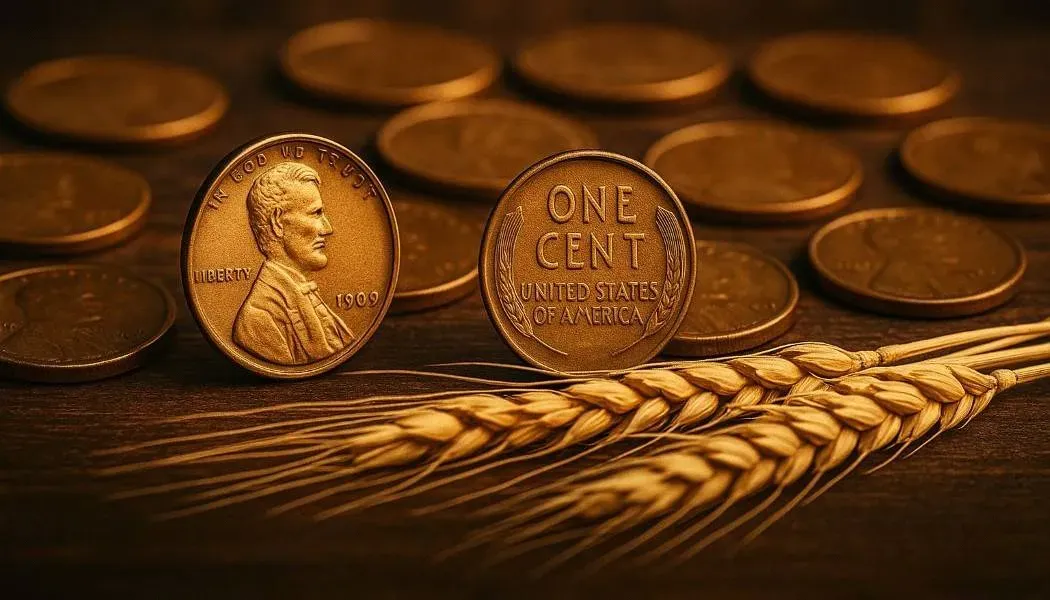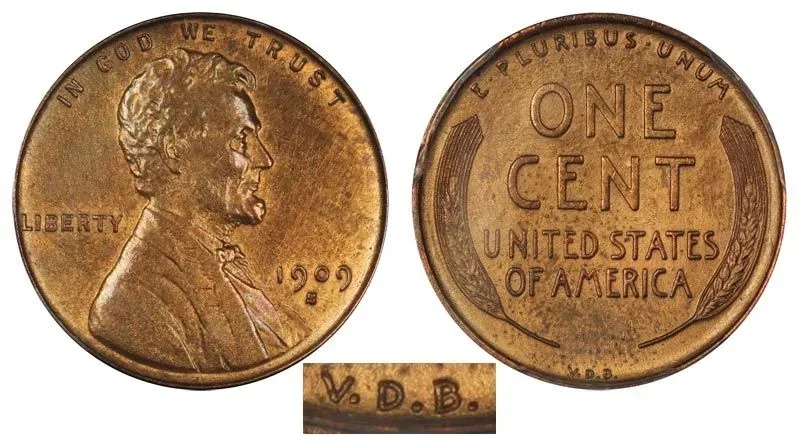Lincoln Wheat Pennies (1909–1958): Collecting America’s Past

A Coin that Defined an Era
From its debut in 1909 until its replacement in 1958, the Lincoln Wheat Penny was more than pocket change—it was a symbol of American history in everyday life. Often regarded as a starting point for coin collectors, the Wheat Cent remains one of the most collected U.S. coins, valued for both its affordability and its storied past. Struck for nearly five decades at the Philadelphia, Denver, and San Francisco Mints, the series holds an enduring place in U.S. coinage.
Condition, rarity, and mint mark remain central to determining value, with pristine examples and low-mintage dates commanding strong premiums in auctions and private sales.
Brenner’s Design and Roosevelt’s Vision
The Wheat Cent was created by Victor David Brenner, a sculptor chosen under President Theodore Roosevelt’s “Renaissance of American Coinage.” Issued to honor the 100th anniversary of Abraham Lincoln’s birth, it became the first circulating U.S. coin to feature a historical figure.
🔹 Obverse: Lincoln’s left-facing portrait, adapted from Brenner’s earlier plaque, flanked by the inscriptions “IN GOD WE TRUST”, “LIBERTY”, and the date.
🔹 Reverse: Two wheat stalks framing “ONE CENT”, with “E PLURIBUS UNUM” above and “UNITED STATES OF AMERICA” below.
Controversy arose when Brenner’s initials “V.D.B.” were prominently displayed on the coin’s first release. Removed after objections, the initials later returned in 1918, placed subtly below Lincoln’s shoulder.
1909-S VDB Lincoln Wheat Penny
Mint Marks: Keys to Rarity
Wheat Cents were struck at three U.S. Mints, and their mint marks often play a decisive role in collectibility:
🔹 S (San Francisco): Frequently scarcer, often among the most prized issues.
🔹 D (Denver): Some years carry low mintages, making them highly desirable.
🔹 No Mint Mark (Philadelphia): Typically more common, though select dates can be quite rare.
The combination of mint mark and production year defines many of the series’ most valuable coins.
Notable Varieties and Errors
The Wheat Penny series is renowned for iconic rarities and unusual errors that continue to captivate collectors:
🔹 1909-S VDB (Mintage: 484,000): The undisputed key date, with values ranging from $800 to $168,000.
🔹 1914-D (Mintage: 1,193,000): Scarce in high grade, worth $175 to $158,000.
🔹 1922 “No D”: A Denver issue struck without its mint mark, selling for $20 to $25,000+.
🔹 1931-S (Mintage: 866,000): Another low-mintage rarity, valued between $85 and $40,000.
🔹 1943 Copper/Bronze Cent: Accidentally struck from copper during the steel cent era of WWII, with only about 13 known. These coins can realize $100,000 to over $1 million.
Evaluating Wheat Penny Value
While most Wheat Pennies in circulation are worth modest sums, certain conditions elevate their importance. Coins in Mint State or Proof condition are often worth multiples of their circulated counterparts. Third-party grading organizations such as PCGS and NGC provide essential authentication and grading services that determine market value.
Market performance also reflects collector interest in U.S. type coins and the appeal of series that connect everyday money with American history.
Historical and Cultural Significance
The Lincoln Wheat Cent is more than a collectible. It represents the intersection of artistry, history, and American identity. As the first circulating coin to depict a president, it marked a dramatic shift in U.S. coinage. Its widespread use across nearly half a century means that these pennies remain tangible artifacts of the nation’s past.
For numismatists, the Wheat Penny series offers remarkable depth: accessible entry-level collecting opportunities alongside world-class rarities that headline major auctions. More than 100 years after its release, the Lincoln Wheat Penny continues to bridge the worlds of history and hobby.
Image source: usacoinbook.com
Another article that may interest you:
1943 Copper Wheat Penny: The Legendary Lincoln Error Coin
Buffalo Nickels (1913–1938): A True Icon of American Coinage
